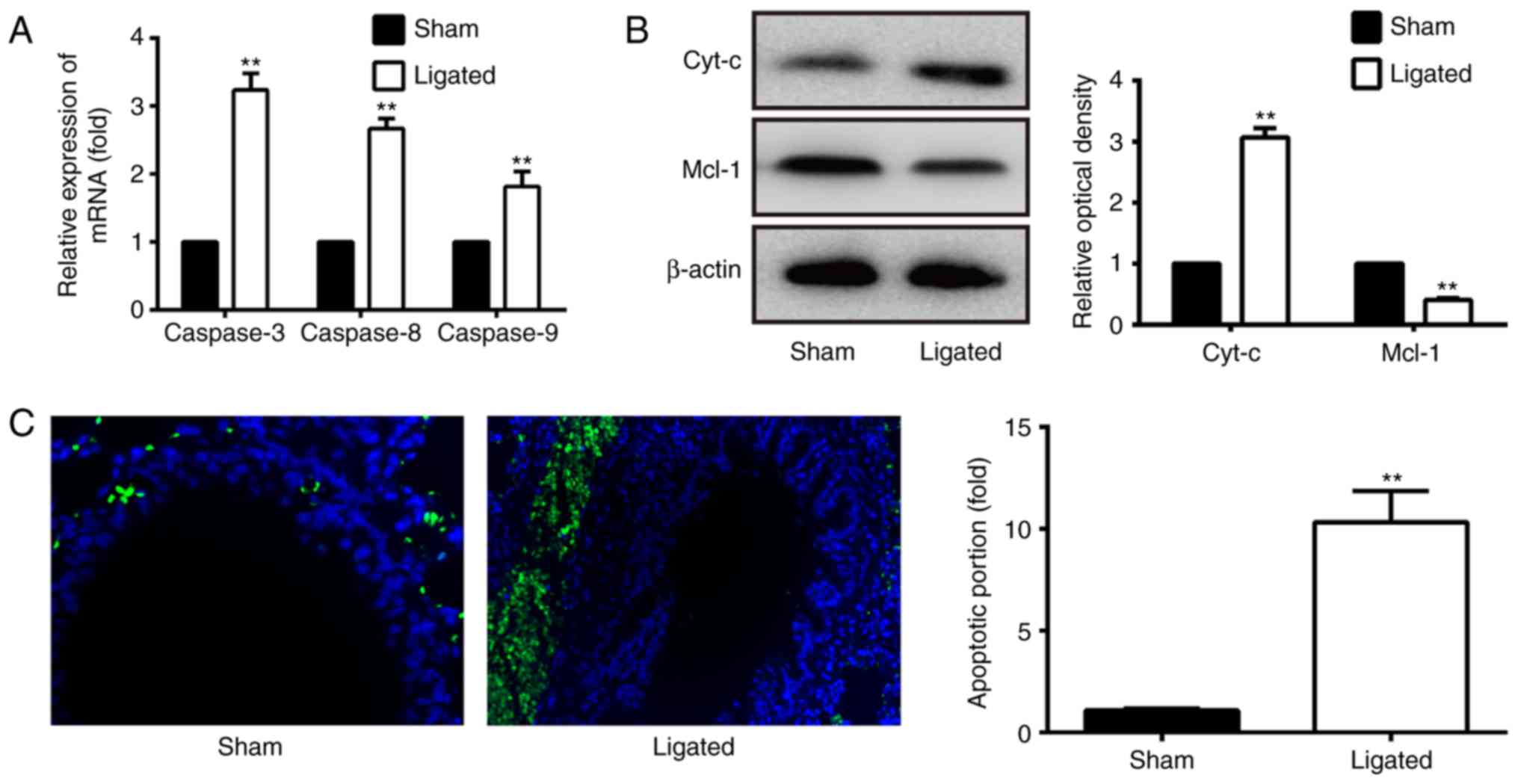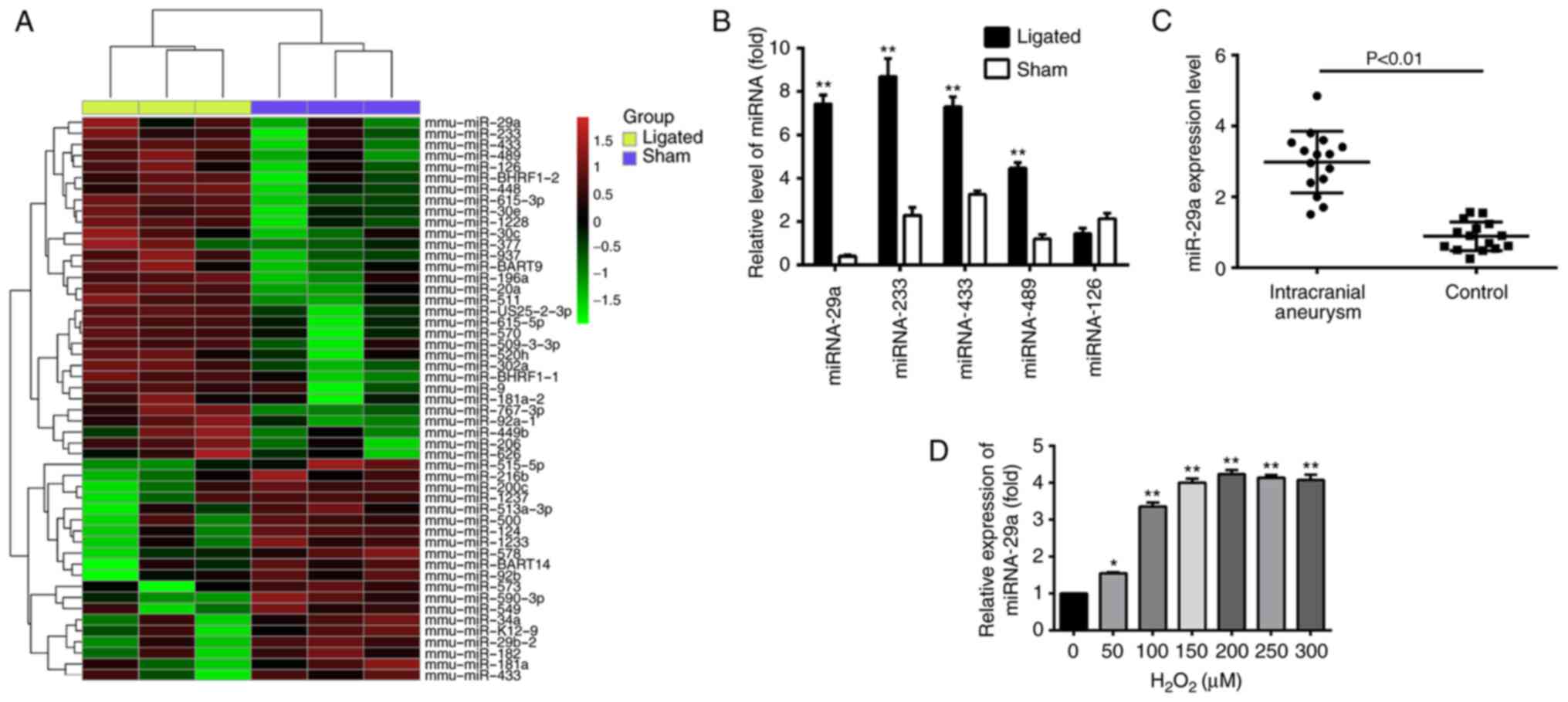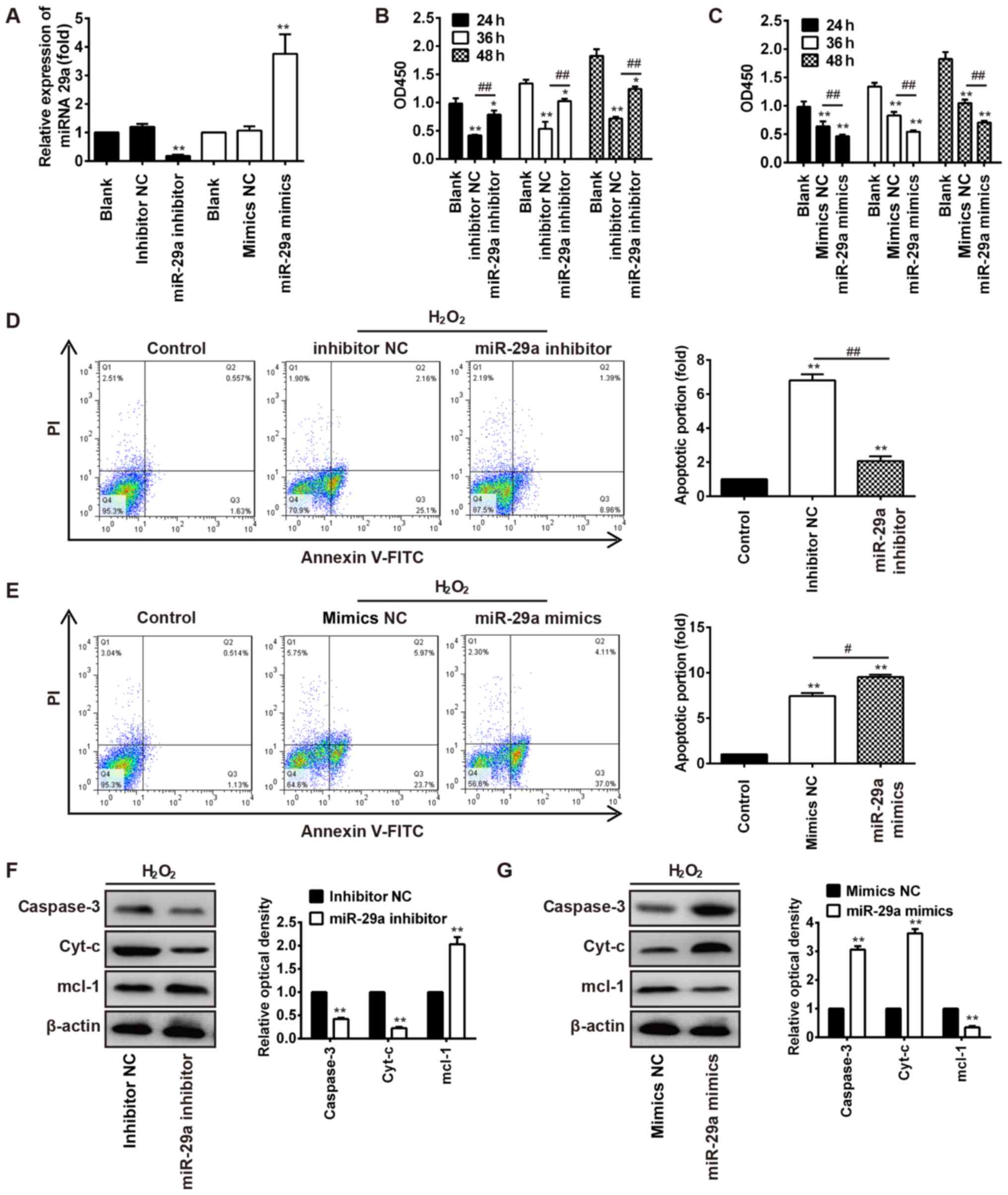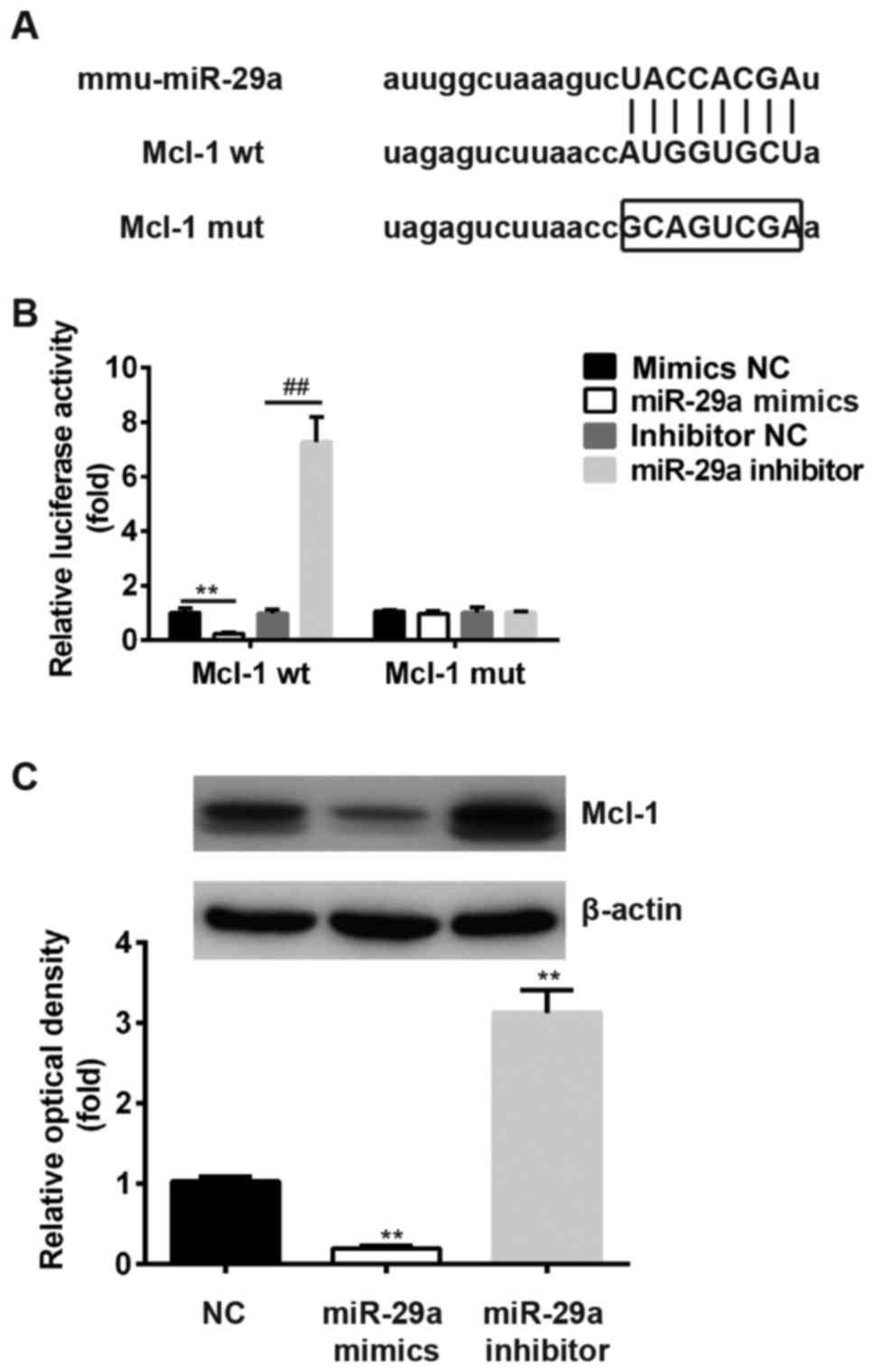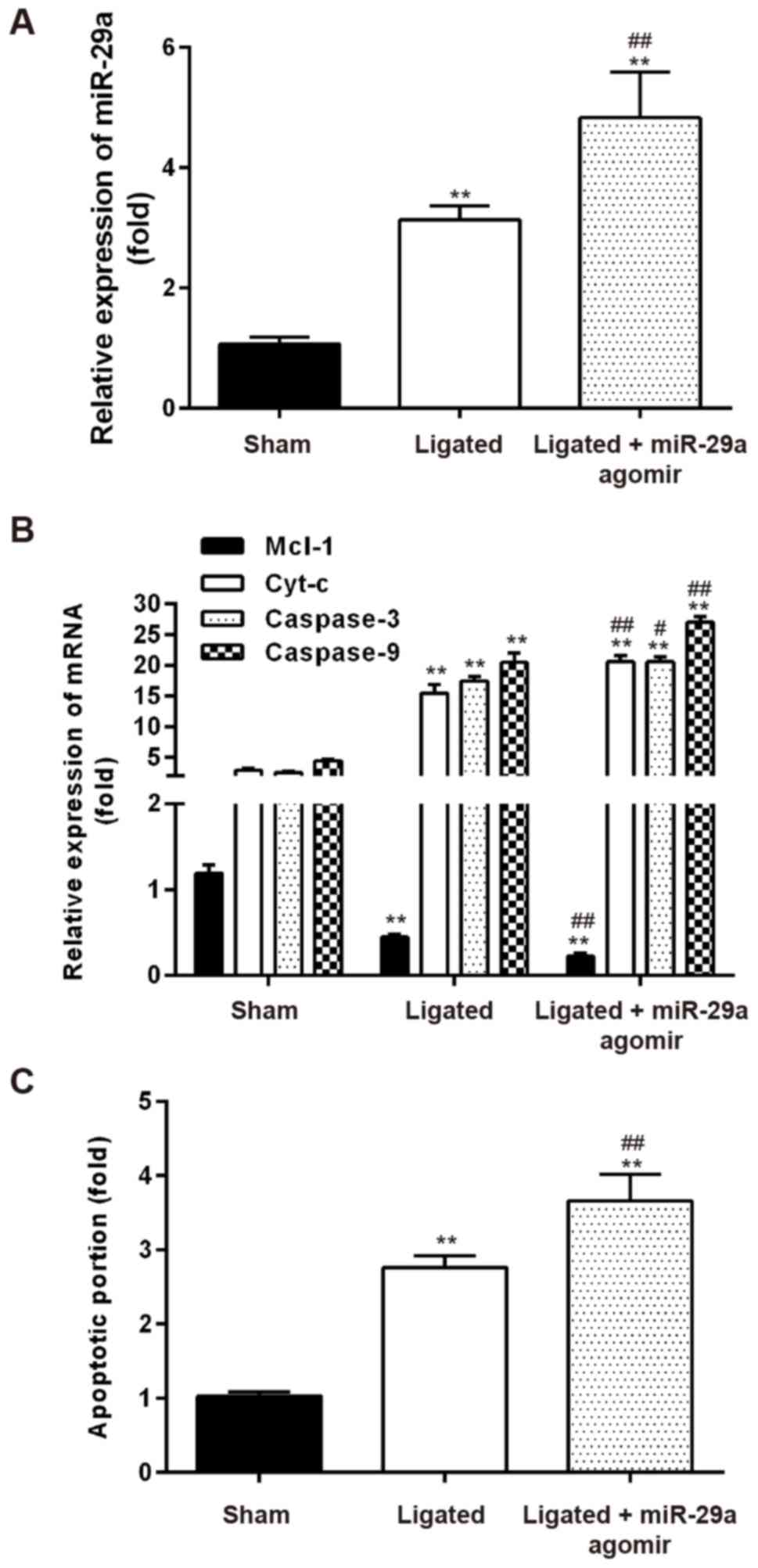|
1
|
Kacar E, Nas Fatih O, Erdogan C and
Hakyemez B: Intracranial aneurysm rupture during flow diverter
stent placement: Successful treatment with stent-in-stent
combination. Diagn Interv Imaging. 96:411–413. 2015. View Article : Google Scholar : PubMed/NCBI
|
|
2
|
Komotar RJ, Zacharia BE, Otten ML, Mocco J
and Lavine SD: Controversies in the endovascular management of
cerebral vasospasm after intracranial aneurysm rupture and future
directions for therapeutic approaches. Neurosurgery. 62:897–907.
2008. View Article : Google Scholar : PubMed/NCBI
|
|
3
|
Lee D, Ahn SJ, Cho ES, Kim YB, Song SW,
Jung WS and Suh SH: High prevalence of intracranial aneurysms in
patients with aortic dissection or aneurysm: Feasibility of
extended aorta CT angiography with involvement of intracranial
arteries. J Neurointerv Surg. 9:1017–1021. 2017. View Article : Google Scholar : PubMed/NCBI
|
|
4
|
Ronkainen A, Hernesniemi J, Ryynänen M,
Puranen M and Kuivaniemi H: A ten percent prevalence of
asymptomatic familial intracranial aneurysms: Preliminary report on
110 magnetic resonance angiography studies in members of 21 Finnish
familial intracranial aneurysm families. Neurosurgery. 35:208–213.
1994. View Article : Google Scholar : PubMed/NCBI
|
|
5
|
Frösen J, Piippo A, Paetau A, Kangasniemi
M, Niemelä M, Hernesniemi J and Jääskeläinen J: Remodeling of
saccular cerebral artery aneurysm wall is associated with rupture:
Histological analysis of 24 unruptured and 42 ruptured cases.
Stroke. 35:2287–2293. 2004. View Article : Google Scholar : PubMed/NCBI
|
|
6
|
Guo F, Li Z, Song L, Han T, Feng Q, Guo Y,
Xu J, He M and You C: Increased apoptosis and cysteinyl aspartate
specific protease-3 gene expression in human intracranial aneurysm.
J Clin Neurosci. 14:550–555. 2007. View Article : Google Scholar : PubMed/NCBI
|
|
7
|
Pentimalli L, Modesti A, Vignati A,
Marchese E, Albanese A, Di Rocco F, Coletti A, Di Nardo P, Fantini
C, Tirpakova B and Maira G: Role of apoptosis in intracranial
aneurysm rupture. J Neurosurg. 101:1018–1025. 2004. View Article : Google Scholar : PubMed/NCBI
|
|
8
|
Liu CY, Su JC, Huang TT, Chu PY, Huang CT,
Wang WL, Lee CH, Lau KY, Tsai WC, Yang HP, et al: Sorafenib
analogue SC-60 induces apoptosis through the SHP-1/STAT3 pathway
and enhances docetaxel cytotoxicity in triple-negative breast
cancer cells. Mol Oncol. 11:266–279. 2017. View Article : Google Scholar : PubMed/NCBI
|
|
9
|
Apoptosis in cancer pathogenesis and
anti-cancer therapy. New perspectives and opportunities. Gregory
and Christopher D.: AntiCancer Res. 37:3712016.
|
|
10
|
Chen Z, Miao H, Feng H and Zhu G: Rupture
of an infectious intracranial aneurysm involving two parent
arteries after surgical treatment of infective endocarditis.
Neurosciences (Riyadh). 16:72–75. 2011.PubMed/NCBI
|
|
11
|
Kadirvel R, Ding YH, Dai D, Lewis DA and
Kallmes DF: Intrinsic pathway-mediated apoptosis in
elastase-induced aneurysms in rabbits. AJNR Am J Neuroradiol.
31:165–169. 2010. View Article : Google Scholar : PubMed/NCBI
|
|
12
|
Bartel DP: MicroRNAs: Genomics,
biogenesis, mechanism, and function. Cell. 116:281–297. 2004.
View Article : Google Scholar : PubMed/NCBI
|
|
13
|
Chen B, Li H, Zeng X, Yang P, Liu X, Zhao
X and Liang S: Roles of microRNA on cancer cell metabolism. J
Transl Med. 10:2282012. View Article : Google Scholar : PubMed/NCBI
|
|
14
|
An YR, Kim SJ, Oh MJ, Kim HM, Shim IS, Kim
PJ, Choi K and Hwang SY: Analysis of microRNA and gene expression
profiling in triazole fungicide-treated HepG2 cell line.
Toxicology. 303:94–98. 2013. View Article : Google Scholar : PubMed/NCBI
|
|
15
|
Kirigin FF, Lindstedt K, Sellars M,
Ciofani M, Low SL, Jones L, Bell F, Pauli F, Bonneau R, Myers RM,
et al: Dynamic microRNA gene transcription and processing during T
cell development. J Immunol. 188:3257–3267. 2012. View Article : Google Scholar : PubMed/NCBI
|
|
16
|
Sessa WC: MicroRNA regulation of
cardiovascular functions. Arterioscler Thromb Vasc Biol.
31:23692011. View Article : Google Scholar : PubMed/NCBI
|
|
17
|
Cui RR, Li SJ, Liu LJ, Yi L, Liang QH, Zhu
X, Liu GY, Liu Y, Wu SS, Liao XB, et al: MicroRNA-204 regulates
vascular smooth muscle cell calcification in vitro and in vivo.
Cardiovasc Res. 96:320–329. 2012. View Article : Google Scholar : PubMed/NCBI
|
|
18
|
Cheng Y and Zhang C: MicroRNA-21 in
cardiovascular disease. J Cardiovasc Transl Res. 3:251–255. 2010.
View Article : Google Scholar : PubMed/NCBI
|
|
19
|
Luo J, Jin H, Jiang Y, Ge H, Wang J and Li
Y: Aberrant expression of microRNA-9 contributes to development of
intracranial aneurysm by suppressing proliferation and reducing
contractility of smooth muscle cells. Med Sci Monit. 22:4247–4253.
2016. View Article : Google Scholar : PubMed/NCBI
|
|
20
|
Torella D, Iaconetti C, Catalucci D,
Ellison GM, Leone A, Waring CD, Bochicchio A, Vicinanza C, Aquila
I, Curcio A, et al: MicroRNA-133 controls vascular smooth muscle
cell phenotypic switch in vitro and vascular remodeling in vivo.
Circ Res. 109:880–893. 2011. View Article : Google Scholar : PubMed/NCBI
|
|
21
|
Engelhardt S and Leierseder S: Coinciding
functions for miR-145 in vascular smooth muscle and cardiac
fibroblasts. J Mol Cell Cardiol. 65:105–107. 2013. View Article : Google Scholar : PubMed/NCBI
|
|
22
|
Rangrez AY, Massy ZA, Metzinger-Le Meuth V
and Metzinger L: miR-143 and miR-145: Molecular keys to switch the
phenotype of vascular smooth muscle cells. Circ Cardiovasc Genet.
4:197–205. 2011. View Article : Google Scholar : PubMed/NCBI
|
|
23
|
Wang GK, Zhu JQ, Zhang JT, Li Q, Li Y, He
J, Qin YW and Jing Q: Circulating microRNA: A novel potential
biomarker for early diagnosis of acute myocardial infarction in
humans. Eur Heart J. 31:659–666. 2010. View Article : Google Scholar : PubMed/NCBI
|
|
24
|
Wu X, Zhang J, Huang Q, Yang P, Chen J and
Liu J: MicroRNA-92a regulates expression of kruppel-like factor2 in
rabbit model of intracranial aneurysm. Cell Mol Biol
(Noisy-le-grand). 61:44–48. 2015.PubMed/NCBI
|
|
25
|
Wardlaw JM and White PM: The detection and
management of unruptured intracranial aneurysms. Brain.
123:205–221. 2000. View Article : Google Scholar : PubMed/NCBI
|
|
26
|
Bolstad BM, Irizarry RA, Astrand M and
Speed TP: A comparison of normalization methods for high density
oligonucleotide array data based on variance and bias.
Bioinformatics. 19:185–193. 2003. View Article : Google Scholar : PubMed/NCBI
|
|
27
|
Livak KJ and Schmittgen TD: Analysis of
relative gene expression data using real-time quantitative PCR and
the 2(-Delta Delta C(T)) method. Methods. 25:402–408. 2001.
View Article : Google Scholar : PubMed/NCBI
|
|
28
|
Friedman RC, Farh KK, Burge CB and Bartel
DP: Most mammalian mRNAs are conserved targets of microRNAs. Genome
Res. 19:92–105. 2009. View Article : Google Scholar : PubMed/NCBI
|
|
29
|
Betel D, Wilson M, Gabow A, Marks DS and
Sander C: The microRNA.org resource: Targets and expression.
Nucleic Acids Res. 36:(Database Issue). D149–D153. 2008. View Article : Google Scholar : PubMed/NCBI
|
|
30
|
Zeng CW, Zhang XJ, Lin KY, Ye H, Feng SY,
Zhang H and Chen YQ: Camptothecin induces apoptosis in cancer cells
via microRNA-125b-mediated mitochondrial pathways. Mol Pharmacol.
81:578–586. 2012. View Article : Google Scholar : PubMed/NCBI
|
|
31
|
Wang WH, Wang YH, Zheng LL, Li XW, Hao F
and Guo D: MicroRNA-29a: A potential biomarker in the development
of intracranial aneurysm. J Neurol Sci. 364:84–89. 2016. View Article : Google Scholar : PubMed/NCBI
|
|
32
|
Meunier L, Siddeek B, Vega A, Lakhdari N,
Inoubli L, Bellon RP, Lemaire G, Mauduit C and Benahmed M:
Perinatal programming of adult rat germ cell death after exposure
to xenoestrogens: Role of microRNA miR-29 family in the
down-regulation of DNA methyltransferases and Mcl-1. Endocrinology.
153:1936–1947. 2012. View Article : Google Scholar : PubMed/NCBI
|
|
33
|
Li MN, Li SS, Meng FS, Han P, Zhang WH and
Zhang LB: Mechanism and influence of down-regulation of miR-29a-3p
expression on apoptosis in mouse macrophage. J South China Agricult
Univ. 39:64–69. 2018.
|
|
34
|
Khamisipour G, Mansourabadi E, Naeimi B,
Moazzeni A, Tahmasebi R, Hasanpour M, Mohammadi MM, Mansourabadi Z
and Shamsian S: Knockdown of microRNA-29a regulates the expression
of apoptosis-related genes in MCF-7 breast carcinoma cells. Mol
Clin Oncol. 8:362–369. 2018.PubMed/NCBI
|
|
35
|
Wang X, Zhong H, Wang L, Dong Y, Jia A, Mo
Q and Zhang C: MiR-29 induces K562 cell apoptosis by
down-regulating FoxM1. Med Sci Monit. 21:3115–3120. 2015.
View Article : Google Scholar : PubMed/NCBI
|
|
36
|
Wu L, Li X, Li Y, Wang L, Tang Y and Xue
M: Proliferative inhibition of danxiongfang and its active
ingredients on rat vascular smooth muscle cell and protective
effect on the VSMC damage induced by hydrogen peroxide. J
Ethnopharmacol. 126:197–206. 2009. View Article : Google Scholar : PubMed/NCBI
|
|
37
|
Lv B, Liu Z, Wang S, Liu F, Yang X, Hou J,
Hou Z and Chen B: MiR-29a promotes intestinal epithelial apoptosis
in ulcerative colitis by down-regulating Mcl-1. Int J Clin Exp
Pathol. 7:8542–8552. 2014.PubMed/NCBI
|
|
38
|
Laine MT, Björck M, Beiles CB, Szeberin Z,
Thomson I, Altreuther M, Debus ES, Mani K, Menyhei G and Venermo M:
Few internal iliac artery aneurysms rupture under 4 cm. J Vasc
Surg. 65:76–81. 2017. View Article : Google Scholar : PubMed/NCBI
|
|
39
|
Piao L, Canguo Z, Wenjie L, Xiaoli C,
Wenli S and Li L: Lipopolysaccharides-stimulated macrophage
products enhance Withaferin A-induced apoptosis via activation of
caspases and inhibition of NF-κB pathway in human cancer cells. Mol
Immunol. 81:92–101. 2017. View Article : Google Scholar : PubMed/NCBI
|
|
40
|
Chang JP, Chen MC, Liu WH, Lin YS, Huang
YK, Pan KL, Ho WC, Fang CY, Chen CJ and Chen HC: Mitochondrial
apoptotic pathway activation in the atria of heart failure patients
due to mitral and tricuspid regurgitation. Exp Mol Pathol.
99:65–73. 2015. View Article : Google Scholar : PubMed/NCBI
|
|
41
|
Zandberga E, Kozirovskis V, Ābols A,
Andrējeva D, Purkalne G and Linē A: Cell-free microRNAs as
diagnostic, prognostic, and predictive biomarkers for lung cancer.
Genes Chromosomes Cancer. 52:356–369. 2013. View Article : Google Scholar : PubMed/NCBI
|
|
42
|
Wang L, Niu X, Hu J, Xing H, Sun M, Wang
J, Jian Q and Yang H: After myocardial ischemia-reperfusion,
miR-29a, and Let7 could affect apoptosis through regulating IGF-1.
Biomed Res Int. 2015:2454122015. View Article : Google Scholar : PubMed/NCBI
|
|
43
|
Xu F, Ahmed AS, Kang X, Hu G, Liu F, Zhang
W and Zhou J: MicroRNA-15b/16 attenuates vascular neointima
formation by promoting the contractile phenotype of vascular smooth
muscle through targeting YAP. Arterioscler Thromb Vasc Biol.
35:2145–2152. 2015. View Article : Google Scholar : PubMed/NCBI
|
|
44
|
Yang T, Buchan HL, Townsend KJ and Craig
RW: MCL-1, a member of the BLC-2 family, is induced rapidly in
response to signals for cell differentiation or death, but not to
signals for cell proliferation. J Cell Physiol. 166:523–536. 1996.
View Article : Google Scholar : PubMed/NCBI
|















